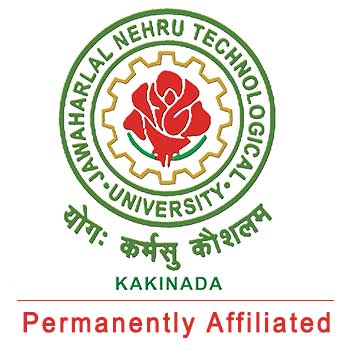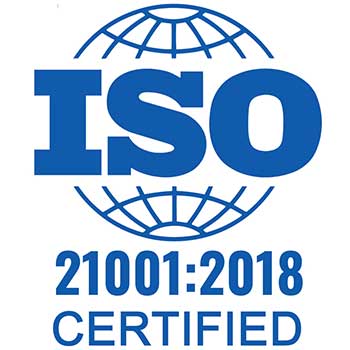Biomedical Signal Processing
Our bodies constantly communicate the information about our health. Thus, this information can be captured through physiological instruments which measure heart rate, oxygen saturation levels, blood pressure, blood glucose, brain activity, nerve conduction and so on. If we see traditionally, such measures are taken at some specific points in time and can be noted on the patient’s chart. However, the Physicians actually see less than once percent of these values as they make their rounds and proceed to treatment decisions are made based upon these isolated readings.
Introduction
Biomedical signal processing involves in analyzing these measurements to provide accurate information upon which the clinicians can make decisions towards their patients. Today the engineers are discovering new ways to process these signals using a variety of mathematical formulae and algorithms. However, working with traditional bio-measurement tools, and the signals can be computed by a software to provide the physicians with real-time data and greater insights to aid in clinical assessments. Though by using a sophisticated means to analyze what our bodies are saying, we can potentially determine the state of the patient’s health through more non-invasive measures.
Real-Time Monitoring
This is other best way to monitor the patient’s signals and proceed further with their decision. While real-time monitoring can lead to better detection management for chronic diseases, earlier detection of adverse events like heart attacks, strokes, and on time diagnosis of disease. While the Biomedical Signal Processing is especially useful in critical care settings, where patient data must be analyzed in real-time.
The researchers of the University of Ontario Institute and Technology, are working in conjunction with biggies in technology like IBM, who have created an environment for sophisticated data analysis which helps to read every reading from every medical device in order to support the clinical decision-making task. However, a fully functioning pilot program targeting the neonatal intensive care unit - NICU of The Hospital for Sick Children, Toronto, has been in place since 2009. There, the doctors are researching the use of advanced stream computing software which may help them in early detection and can be a use for the early warning system to alert NICU staff when they have any emergency or life- threatening complications. Presently, the streaming environment procedures are doing 1256 data points per patient each second, through providing constant monitoring of any changes in an infant’s condition as well.
Cloud Computing
Adapting real-time monitoring is one step further, and thus the same thing is being tested by the researchers using the cloud computing to provide advanced specialist support in the rural and remote communities. While the cloud computing approach is currently being tested using data from the neonatal intensive care unit for Women and Infants Hospital in Providence, Rhode Island.
However, providing a remote database also has some implications for telemedicine applications. The Real-time embedded signal processing could be automated onto chips that are part of small, lightweight devices combined into cell phones or worn by patients – (look into see Wearable & Implantable Technologies) who can be observed from home.
A Closed System
We do know that the human body is comprised of several systems working together in a closed loop and thus programmed to preserve life. While a set of points in our brain work to continually monitor and respond to the internal and external influences to regulate body temperature. Though our heart rate varies in response to the autonomic nervous system, which acts as the feedback system, directing the heart to make adjustments as per to the body’s level of exertion. Likewise, as a person begins to become ill and the body reacts very subtly. In this way, everything affects something else, and these effects can be measured or interpreted. By doing complex analyses of the body’s signals, we can discover early indications n how various conditions manifest themselves.
Toward an Understanding of Alzheimer’s
The biomedical signal processing can lead to better and timelier diagnosis and treatment of a disease such as Alzheimer’s. While the researchers are combining EEG readings with other testing parameters to detect patterns that will differentiate Alzheimer’s patients from those with other forms of dementia.
Though they are focusing on the deteriorating synchronization between the left and right sides of the brain, present, a definitive diagnosis can only truly be made after an Alzheimer’s patient has died. But in most cases; they have suspected only after the disease is already in the advanced stage. It is always suggested to have earlier detection which could allow for earlier intervention with drugs that slow the progression of the disease.
Abolishing the Guesswork
Our body is our greatest asset, but the current limitations of science and medicine lead to some sort of guesswork on the part of physicians. Why is this? While the treatments are often employed in a trial-and-error fashion based upon each physician’s experiences with their own patients. But is this the right of treating them is the question now? If we see sometimes doctors do not know whether a patient has gotten better as a result of the body’s own capability to heal itself or through medical intervention. So the advanced way of detecting the right issue and then going forward to treat it is always suggest able. Because guesswork may sometimes help us - but not always though.
Though the expert physician can consider four to seven variables simultaneously, in those some 20 or 30 different situations could be occurring in a patient’s body at once, later what? So the physician makes an educated guess based on his previous experience. So by giving the physician better information, will always lead to making him take better decisions. The more we understand the system, the more we can remove the guesswork.
For example, let us take the lungs, Lung tissue will be just of 5 microns thick. If a patient is on a ventilator, a doctor palpating the patient’s chest through their rib cage cannot probably determine the degree of stiffness of the patient’s lungs. So the amount of ventilation prescribed is estimated and subsequently adjusted based on how that patient responds. Here engineering can help to eliminate—or at least reduce the amount of trial and error which may occur in millions of real-life patients every day.
Knowing the Standards and Protocols
To acquire and understand data from multiple sensors and create meaningful information, specific protocols and standards need to be established and followed. What are these protocols for data acquisition? How they help and how will this data be transmitted and then stored? How can it be processed to provide real-time information about the patient’s health? How can this data be mined to discover new information about a particular patient as well as the population at huge? This is again, the hand of the engineer comes into play. But often times our hands are also tied-up.
However, many biomedical sensors operate using proprietary protocols which are guarded to protect financial interests. While in order to advance our understanding of bodily and disease processes, this will have to change as per the requirements.
In this process, we have a BioSig project which is again an open source software library that provides different software tools for the analysis of many different bio signals; and these tools address issues such as data acquisition, quality control, artifact processing, data visualization and so forth.
Multi-Scale Signal Processing
By taking and examining measurements in vast amounts, engineers are working towards an improved understanding of how physiological systems should work. A lot of effort is currently focused on multi-scale signal processing; looking for features in the measurements that need to be taken at varying scales in order to make more reliable predictions about the whole patient and his or her records.
While the biomedical signal processing includes the entire spectrum of health and wellness. It is a basis of how engineering aids the field of medicine. Again medicine is an empirical field; here both the doctor and medicine work together. However, the Doctors understand medicine based on what they know to be true through their study and practice; and Engineers, on the other hand, focus on trying to fully understand a particular system. Once they truly know the answer, the work in that area will be done.






